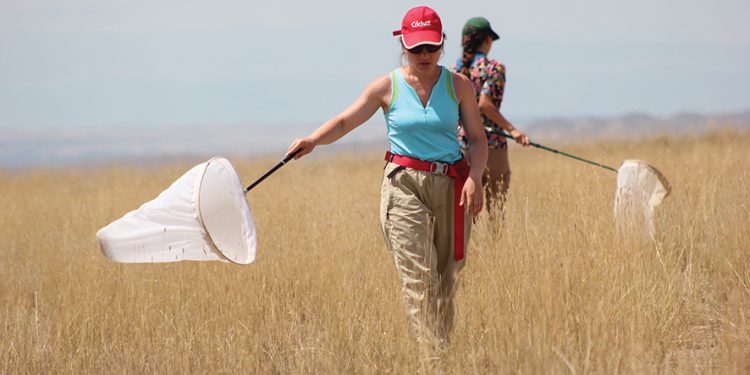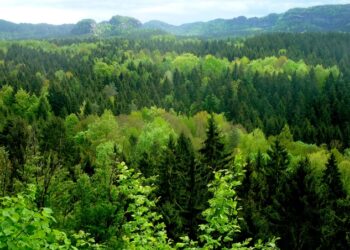SABUKO, the Society for Nature Conservation, is currently engaged in the implementation of a project titled “The Kakheti Steppes: a fragile balance between a living landscape or a future desert.”
Building upon the successes of the previously funded “Restoring Gallery Forest and Grasslands in the Iori River Valley” project, the Kakheti Steppes project places a strong emphasis on the restoration of wildlife habitats and fostering collaboration with the pastoralist community. By reviving gallery forests and grasslands, critical habitats for focal species are rejuvenated, supporting their populations and ecological functions. Through thoughtful restoration initiatives, such as reforestation and habitat management, the project aims to preserve the rich biodiversity that thrives in these unique landscapes.
The first stage of the project covered the Chachuna Managed Reserve located in Georgia’s Dedoplistskaro municipality, which has faced a severe problem of degradation due to unregulated grazing, while the second phase covers Chachuna, Kotsakhura Range, Samukhi Valley and Vashlovani Protected Area, covering a territory of more than 60,000 ha in total.
This comprehensive initiative seeks to address critical conservation concerns within the Kakheti Steppes ecosystem. Among its primary components, pasture restoration emerges as a central focus, as these pastures are integral to sustaining the delicate ecological equilibrium of the region.
Several significant studies have been conducted within this project, serving as foundational research for conservation efforts.
These studies encompass a wide spectrum of factors crucial to understanding the ecosystem’s dynamics.
Key investigations have been conducted in areas such as insect populations, grassland composition, socio-economic considerations related to the development of a sustainable value chain, and an analysis of gender dynamics within the local community. Currently, carbon research is underway.
These studies provide a comprehensive assessment of the Kakheti Steppes’ existing conditions, forming the basis for future conservation strategies.
In the project’s forward trajectory, SABUKO has planned further studies to investigate the issue of human-wildlife conflict within the region. This research aims to identify and address challenges faced by both the local communities and wildlife.
Additionally, various interventions are being tested, building upon successful practices like rotational grazing. These interventions will encompass activities such as manure spreading to enrich the soil, targeted seeding and hay distribution to support seed banks, mob grazing for enhanced pasture health, and the innovative use of GPS-collared goats and electronic fences for wildlife monitoring.
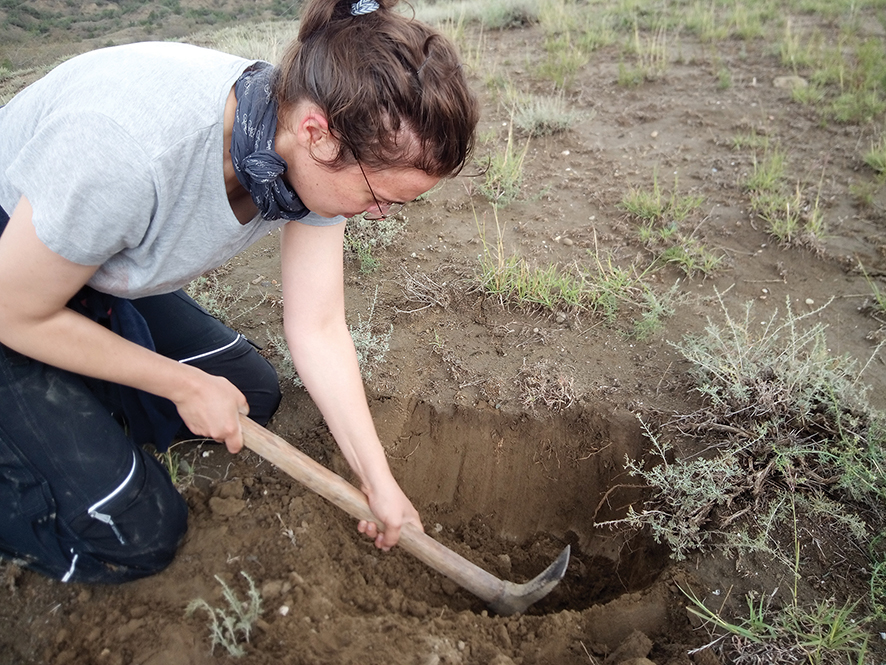
The overarching narrative of the Kakheti Steppes conservation project revolves around the imperative of preserving this unique landscape. It is not merely an ecological endeavor but a testament to the harmony that can be achieved between human activity and the natural world.
More specifically, the following studies have been conducted as part of the Project:
• Pastures and soil composition research, conducted by botanists.
• Insect study – to determine how rotational grazing affects pastures (The above-mentioned studies were conducted by the researchers of Institute of Biology and Institute of Zoology).
• Carbon study (still ongoing) – to determine how the carbon amount in the soil changes as a result of the activities carried out by SABUKO.
• Socio-economic survey (82 farmers were interviewed) – how did the introduction of rotational grazing affect them economically, how beneficial it is for them financially, what their needs are, their opinion about the introduction of rotational grazing.
• Gender research – status of women in Azerbaijani families, farm management and needs. Women managing farms, their water needs, etc.
• The planned test interventions – through which SABUKO will evaluate the effectiveness of different measures – such as manure spraying, mob grazing – and the mobile grazing method.
• SABUKO purchased an electric fence, which has not been installed yet- it is yet to be determined how will it affect grass coverage.
• Sowing – spreading the seed bank on the pastures to enrich them. Hay has also been purchased and it will be sowed during the season.
• Tracking of sheep and goats with GPS will continue as part of monitoring, to determine their routes.
• Drone monitoring is planned in October to determine pasture quality.
• Education research – Education research – to determine the quality of farm management and wildlife coincidence.
To find out more details about the first three important studies regarding pastures – Pastures and soil composition research, insect study, and carbon study, GEORGIA TODAY spoke to the field specialists and researchers who conducted them.
Giorgi Chikorashvili, Natural Resource Manager at SABUKO, told us that within the botanical part of the research, botanists studied 150 points, i.e. 50 clusters, and their composition.
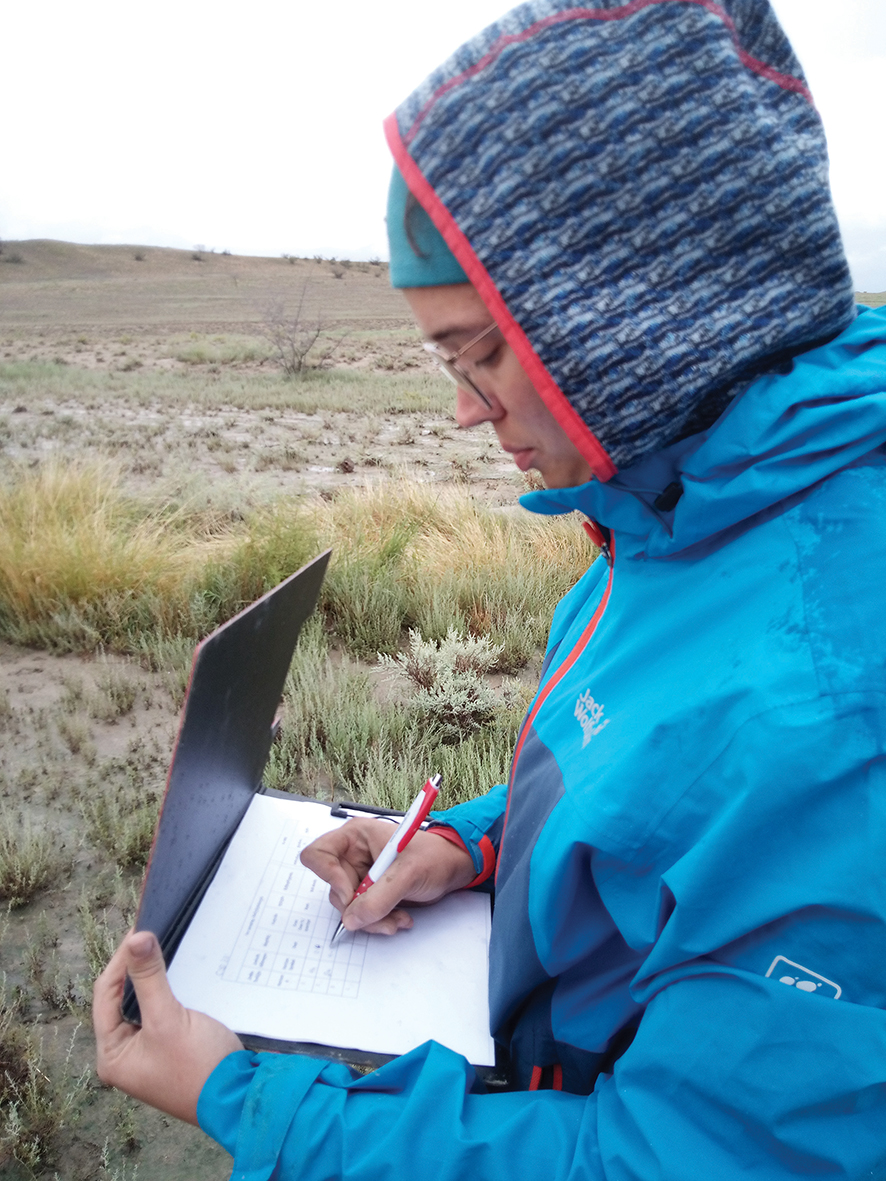
“Botanists studied three dominant types of vegetation in the research area, as well as many other existing vegetation species. They also studied coverage rates in the area to determine how degraded this or that pasture was. Such a detailed study will be useful for the future successful introduction of rotational grazing, in all further activities and test interventions planned by SABUKO, such as mob grazing or sowing, as well as for other field professionals and experts for further research over the years. 90% of data received from the study has already been processed, botanists have completed their work, and now we’re starting to analyze the data. Once this time consuming process is completed, we’ll have comprehensive general conclusions based on the study,” he tells us.
On the insect study, we spoke to Eka Arsenashvili – Educational Officer at SABUKO and also Researcher of the Institute of Ecology, invited research assistant of the Caucasian Barcode of Life (CaBOL) project.
“The purpose of the Insects (Arthropod) research in SABUKO project area is to monitor habitat recovery after changes in grazing management. It is known that arthropods (insects, spiders) are one of the best organisms for environmental monitoring due to their diversity and rapid response to environmental changes.
A large-scale methodological study for the research of arthropods and the collection of primary data was carried out during the field season of 2023, the purpose of which is to assess the species and quantitative diversity in the study area and to compare it with the material collected in the same area by the same method four years later. The final goal of monitoring is how the types of pasture management affect the species diversity and quantitative richness of arthropods.
The research was carried out on several different management types of grassland:
• An area where rotational (alternative) grazing was introduced,
• Strictly controlled area where grazing is prohibited,
• Meadows where rotational grazing will be done in the next season
• Control area where the grazing process goes on as usual and is not subject to any intervention.
The collected material is stored at the Institute of Ecology of Ilia State University with the support of the CaBOL project. The material needs taxonomic processing in the entomological laboratory, after which we will know the data of the first year.
It is worth noting that an important scientific sample was collected during the field season of the first year, which is confirmed by the discovery of several new species that were not recorded from the territory of Georgia until now. The data has not been published yet, we are waiting for a complete analysis of the material and a final report on the mentioned topic,” she told us.
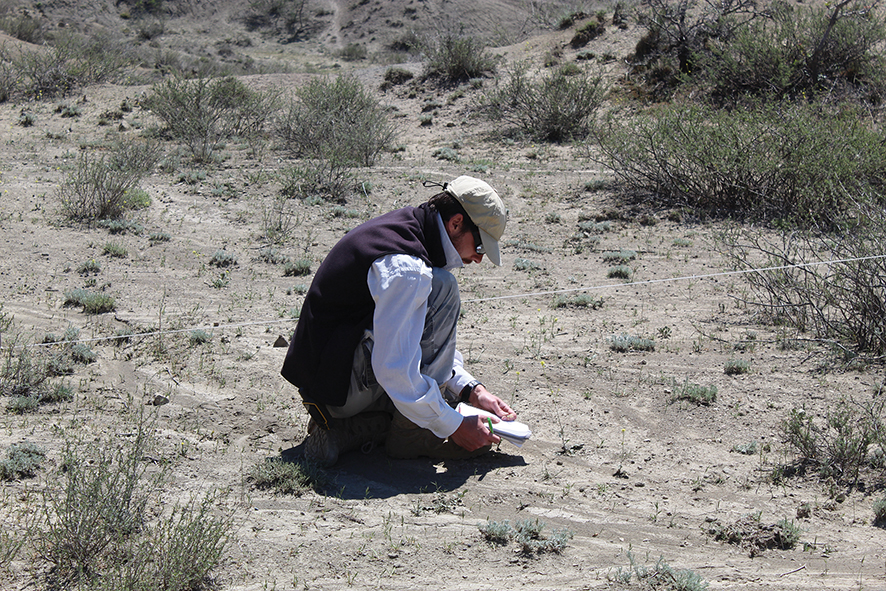
Nika Marsagishvili, a carbon researcher at SABUKO involved in the carbon study, Forester and Soil Scientist, told us that as the study is still underway, they don’t have final results and conclusions yet, however, he elaborated on the relevance and importance of determining the organic carbon content in soil.
“Why is it important to study carbon in soil in today’s world? Because it is organic matter that accumulates/stores in the soil as a result of animal and plant decomposition, and it is an important component of the global carbon cycle, regulating the transition of carbon dioxide (CO2) between the soil and the atmosphere. Carbon in soil affects soil fertility, water catchment functions, erosion and, most importantly, helps the environment maintain biodiversity. Scientists in many countries around the world study carbon in soil to understand how human activities affect the environment and climate. They use world-leading technology and equipment to observe and monitor carbon content in real time. And, by examining all of this, it becomes possible to more firmly evaluate land use, forestry, agriculture and other similar types of factors in relation to forest and soil, by tracking their stocks.
“Further to the research conducted, it is necessary to identify and implement the goals and outcomes that need to be achieved to enhance carbon in soil sequestration, which is the process of collecting and storing CO2 in the soil. The above will help mitigate climate change by reducing the amount of CO2 in the atmosphere. Carbon research can also provide valuable information to improve soil health and productivity, which can be useful for producing more organic products for food security,” he notes.
Nika says soil sampling is done according to the World Soil Science Methodology (WRB), where each detail is described step by step: how modern methodologies are used to properly dig the profile, take samples and classify the soil.
“In the excavated soil profile, we describe the soil horizons and their main characteristics. And then we take soil samples for laboratory analysis, where the amount of carbon stock is determined for each horizon, and then, by means of appropriate formulas, we determine what carbon stock we have in the overall profile,” he tells us.
In the upcoming years, SABUKO is expected to bring even more benefits to both wildlife species and the local population through its dedicated work, various-profile researches and innovative approaches, supporting economic activities and preserving Georgia’s unique natural resources at the same time.
By Ana Dumbadze

